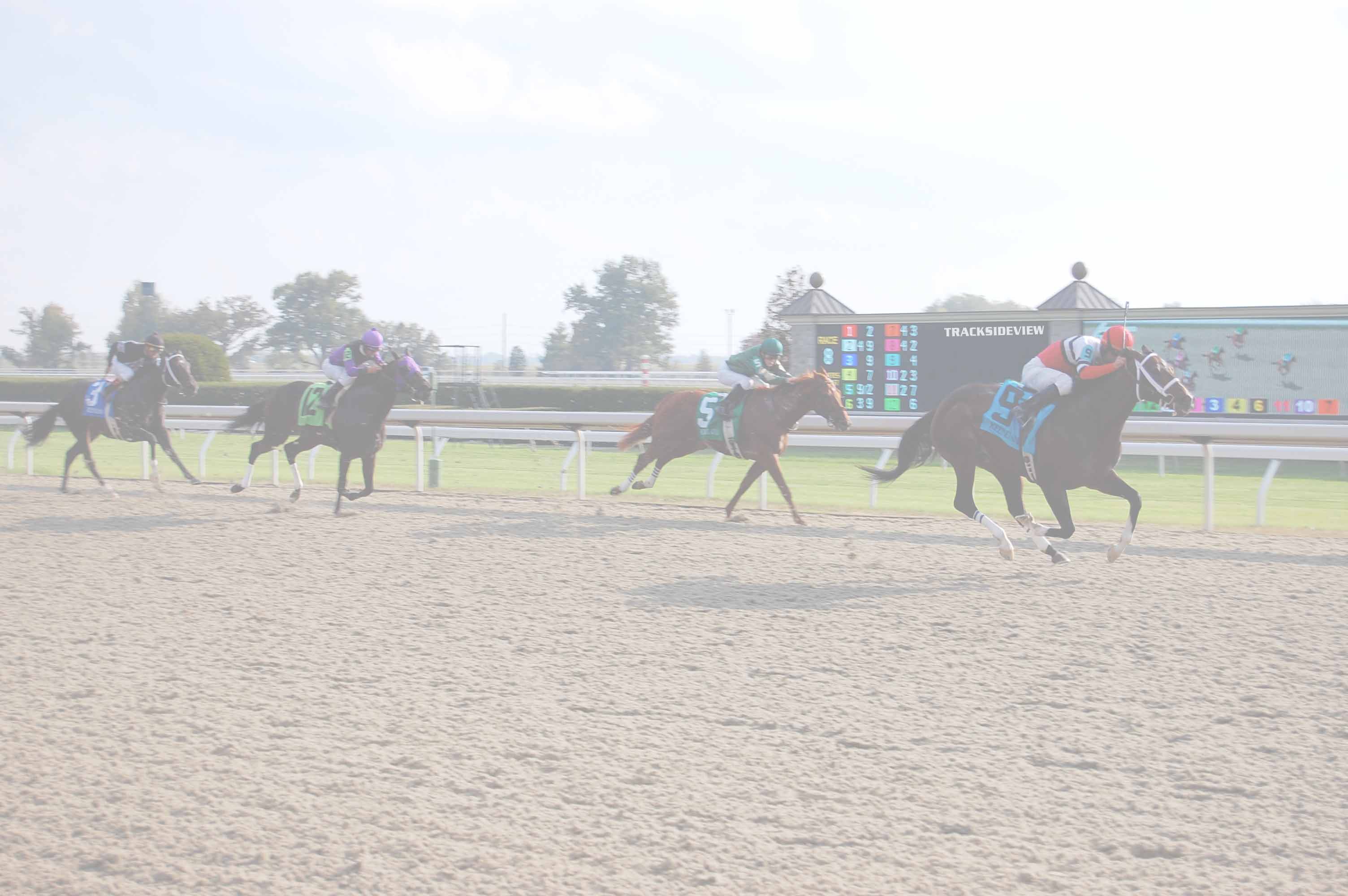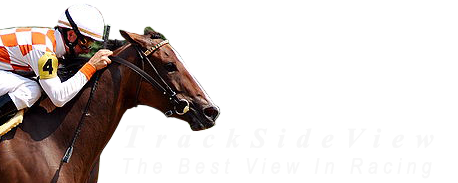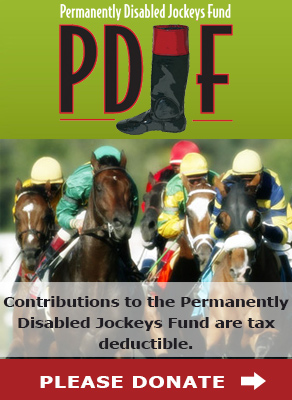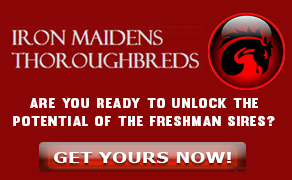The Pace Trends of the Modern Kentucky Derby
By Bob Hill, staff writer
TracksideView.net —-
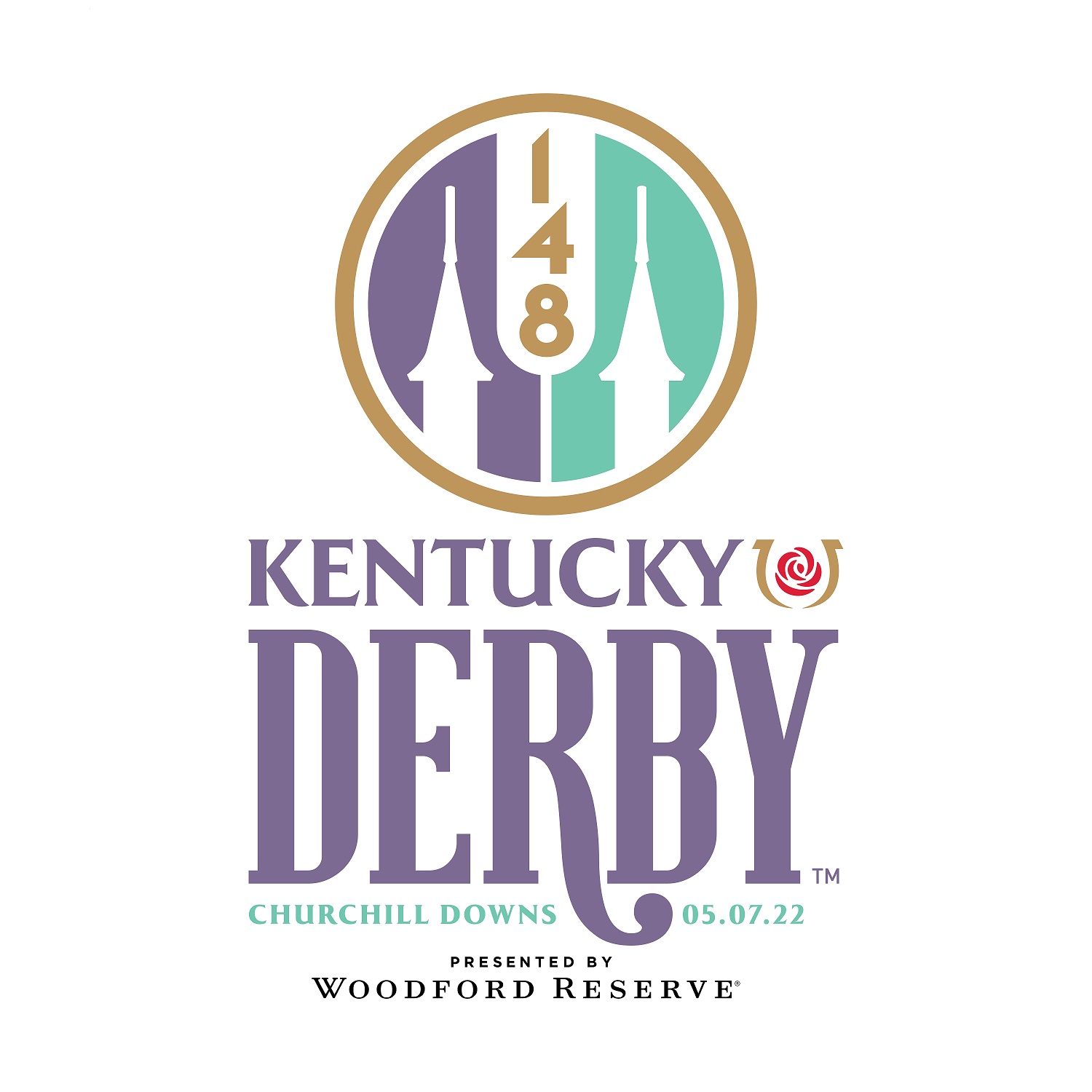
Most horse players are familiar with the old saw that “speed is dangerous.” Historically, many successful horse players realized that the concept was moderated significantly in the Kentucky Derby due to the distance of the race, 1-1/4 miles or 10 furlongs. In that race, the importance of stamina often was viewed as more important than speed. For a number of years horse players were safe in using a Dosage Index of 3.00 as the top cutoff point for potential Derby winners. Dosage Index is a number derived by calculating the stamina and speed influences in pedigree as a ratio of their presence. Low Dosage numbers indicate the presence of a higher ratio of stamina in the pedigree and higher index numbers signaled a sprinter’s pedigree. The number 3.00 was advanced by the originators of this concept as the upper limit of potential Derby winners.
However, the profile of Derby winners has changed significantly in the recent past. Going back to the year 2000, 10 Derby winners have had dosage indexes exceeding 3.00 and four others had DI numbers of exactly 3.00. Since the inception of the Derby qualifying points 10 years ago five winners of the Derby had dosage indexes exceeding 3.00 and three had indexes of exactly 3.00. The median Dosage Index for the 22 year period is exactly 3.00, and for the 10 years of the Derby points system the median number is 3.11. Thus the number once thought of as an upper limit has become the overall average.
So what can we conclude from these data? Essentially, the notion of stamina-first handicapping in the Derby is no longer a valid (or profitable way from a bettors standpoint) to approach Derby handicapping. Undoubtedly, the breeding industry has changed to reflect these trends in that increasing numbers of well-thought-of Derby hopefuls will show less stamina and more speed in their pedigrees. Sales prices and volumes at the top sales each year reflect the change. Stud fees and sales prices reflect on-track racing success, so many of today’s expensive offspring come from pedigree lines with diminishing stamina influence and increasing speed influence.
Below is a list of this year’s top 21 Derby hopefuls showing where they fit on the Dosage Index spectrum. In the list I have included the names of past winners to provide a comparison point to this year’s crop.
0.00 – 2.00 Dosage Index Big Brown, Monarchos Epicenter, Tiz the Bomb, Taiba, Smile Happy, Simplification
Animal Kingdom, Funny Cide Crown Pride, Early Voting, Classic Causeway, Cyberknife,
2.01 – 2.99 Dosage Index Barbaro, I’ll Have Another Zandon, Summer is Tomorrow, Happy Jack
Street Sense, Medina Spirit
3.00 exact Dosage Index Authentic, Justify, Super Saver Mo Donegal, Charge It, Un Ojo, Pioneer of Medina
Maximum Security
3.01 – 3.99 Dosage Index California Chrome, Orb, War Messier, Barber Road, White Abarrio
Emblem, Fusiachi Pegasus, Smarty
Jones
4.00 – 4.99 Dosage Index American Pharoah, Mine That Bird Tawny Port, Zozos
Giacomo
5.00 – 7.00 Dosage Index Always Dreaming, Nyquist None
I do not suggest in any way that you should eliminate or upgrade your selections based on Dosage Index. As noted above, the trend in recent years is that the profile of winners has tilted up the scale of Dosage Index, but the data is not well used as an absolute. It is important also to know that the running styles of horses in various Dosage Index categories vary greatly. Giacomo and Mine That Bird both had pedigree profiles suggesting strong influence of speed, yet both won the Derby from far off the pace. Early Voting’s pedigree profile suggests strong stamina influence, yet every handicapper knows he’s the fastest horse in the 2022 field. What follows about pace and running style should be much more informative to a handicapper’s job of narrowing choices.
Wide agreement exists about the running styles of thoroughbred race horses. A few horses are versatile enough to alter styles from race to race, but most will develop a pattern that works for them over time. The four categories to which I refer are commonly known as early speed/need the lead, fast/close-up pace pressers, moderate/mid-pack pace pressers, and deep closers. This next table shows the published pre-Derby running styles of the past 22 winners. Those style descriptors were based on their running styles in races leading up to the Derby. In most cases these horses won the Derby running their preferred style. Following the chart, I offer comments on a few past winners who won the Derby with a style different from the one listed in the table.
Early Speed/Need the Lead War Emblem, Super Saver, Authentic
Fast Pace Presser/Near the lead runners Fusiachi Pegasus, Funny Cide, Smarty Jones, Barbaro, Big Brown, I’ll Have Another,California Chrome, American Pharoah, Always Dreaming, Justify, Maximum Security, Medina Spirit
Moderate Pace Pressers/Mid-pack runners Giacomo, Mine That Bird, Nyquist, Animal Kingdom, Orb
Deep Closers/Back-of-field runners Monarchos, Street Sense
Note: Three Derby winners that typically ran mid-pack in the run-up to the Derby found themselves near the back of the field at the second call of the race. They then launched closing bids much more like a deep closers to win the Derby. They were Giacomo, Mine That Bird, and Orb. In the cases of Giacomo and Mine That Bird, the early speed horses on or near the lead were consumed in the suicidal opening fractions of Spanish Chestnut and Palace Malice. Animal Kingdom won with a rally from mid-pack consistent with his earlier races.
In the Kentucky Derby the next to last call is at the quarter pole and the stretch (last before finish line) is at the eighth pole. At the quarter pole the horses have already run a mile and have a quarter mile to go. At the stretch call they have run 1-1/8 mile with an eighth mile to go. In the last 22 years only five winners have passed a rival between the stretch call and finish line. Giacomo passed five horses in the final eighth mile, Animal Kingdom passed two, and Monarchos, Orb, and I’ll Have Another passed one each. In the other 17 Derby races since 2000 the winner made the lead by the stretch call. Out-of-the cloud finishes in the Derby are a rarity in the modern era. Since the inception of the points system for qualifying the field, only two horses (Orb and I’ll Have Another) passed a rival in the final eighth mile. Dating back to California Chrome, every horse crossing the Derby finish line first has led at the eighth pole.
If we move back to the quarter pole, the importance of being well placed is still important, but to a lesser degree. Since 2000, one horse won after being 12th at the quarter pole (Mine That Bird). He passed all eleven rivals by the eighth pole. Giacomo was 11th at the quarter pole. Fusiachi Pegasus and Monarchos were sixth at that point, and Animal Kingdom and Orb were fifth. I’ll Have Another was fourth, Street Sense and American Pharoah third, Funny Cide, Smarty Jones, Super Saver, and Nyquist second. All nine other winners led at the quarter pole.
Here’s how the 2022 prospects fit these running styles descriptors.
Early Speed/Need the Lead Classic Causeway, Early Voting
Fast Pace Presser/Near the lead runners Epicenter, White Abarrio, Taiba, Messier, Zozos, Charge It, Pioneer of Medina
Moderate Pace Pressers/Mid-pack runners Tiz the Bomb, Cyberknife, Simplification, Smile Happy, Tawny Port, Un Ojo
Deep Closers/Back-of-field runners Zandon, Mo Donegal, Barber Road, Happy Jack
Within each running style category there are questions handicappers can ask questions such as those that follow to narrow down top choices or to eliminate ones deemed unlikely as we seek a winner.
For the early speed/need the lead category we need to judge: Is there a horse good enough to get on the lead and wire the field? Is a pace duel possible or likely, thus compromising these types?
For the fast pace presser/near the lead runners the questions are: Which ones of these have won at the highest levels of the prep races? Among this group which ones have the most early speed, mid-race speed, and closing speed after contesting the pace? Is there one in this group that can get on the lead and wire the field? How have each of these types fared once they have gotten to the lead in their preps?
For moderate pace pressers/mid-pack runners we need to figure out: Which of these are capable of closing from farther off the pace than they have done before due to field size? Mid-pack in a ten horse field is fifth or sixth place. In the Derby this spot may be as far back as 10th to 15th place. Which of these runners have shown the ability to maneuver through traffic and/or avoid trouble? Which ones in this category have run the fastest at the end of their route race preps? Which ones will only have a chance if there is a pace meltdown up front?
The same questions that we ask for moderate pace pressers apply to the deep closers. The difference is that we can assume these types will be far back in the early stages of the race before launching their bids. Which of these horses are more like Giacomo and Mine That Bird, and which ones more resemble the talent and records of Orb and Animal Kingdom?
It is also important to note that the above question are designed to find winners. Very different questions apply for finding horses to fill out exotics tickets. Mid-pack runners and deep closers are often candidates to fill out exotics, some at very long odds. As you apply the questions you may begin saying to yourself, “This one probably cannot win, but he could hit fill out an exotics ticket.
There are many handicapping tools available to help us answer these questions. It’s wise to use as many tools as possible to make decisions as factual as possible. In a companion article published on this site this writer has offered pre-draw analyses of the 2022 field by answering these questions. Reading that article will allow you to see the judgments I made when applying these questions.
Good luck to all!
